If you’re traveling to the Fergana Valley from any other part of Uzbekistan, Kokand makes a great first stop. It’s the most tourist-friendly city in the region and is home to some impressive architecture—the Khudoyar Khan Palace being one of the biggest tourist attractions in the whole region.
In this concise travel guide, I’ll share with you all the best things to do in Kokand plus some extra travel tips.
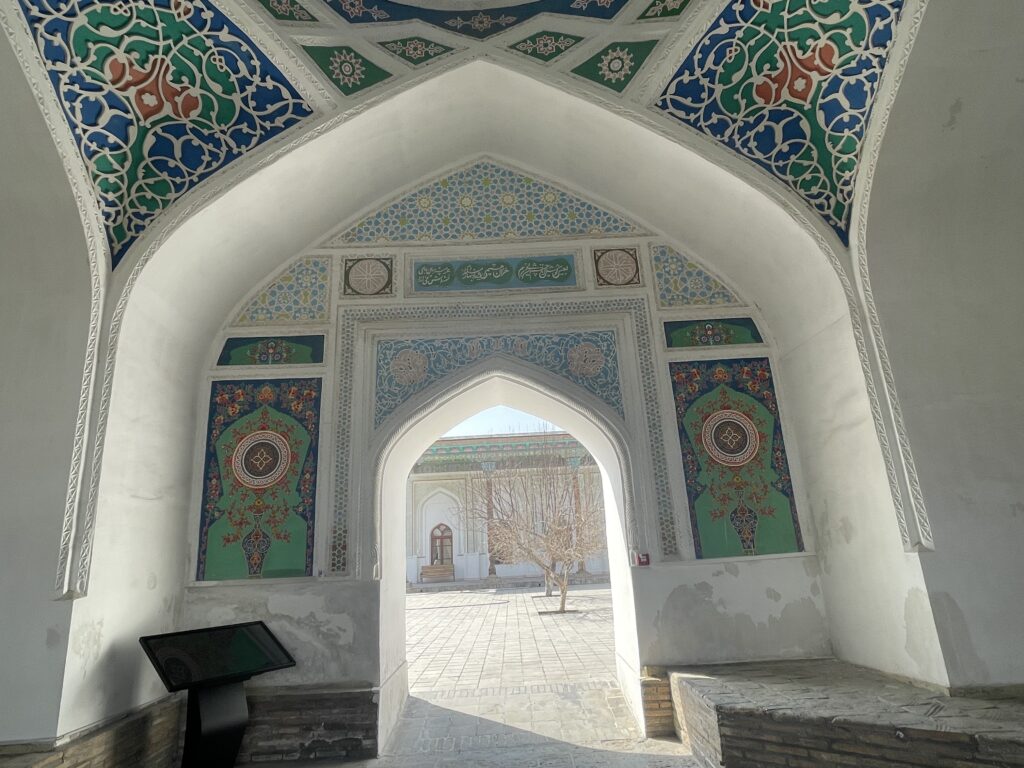
Things To Do in Kokand
Khudoyar Khan Palace
Kokand is home to the most popular historical monuments of the Fergana Valley and the Khudoyar Khan Palace is certainly the biggest draw of the city. Located inside a large grassy park in the center of the city, it was completed in 1873.
The palace was commissioned by Sayid Muhammad Khudayar Khan, the most famous of all the Khans of Kokand, who ruled for four separate periods between 1845 and 1875. High taxes and a trade agreement with Russian general KP Kaufman made him unpopular and he had to flee to Russia during an uprising in 1875.
The script above the entrance to the palace apparently says, ‘Sayid Muhammad Khudayar Khan – Great ruler‘—an interesting slogan for a ruler who also reportedly fled to Bukhara twice.
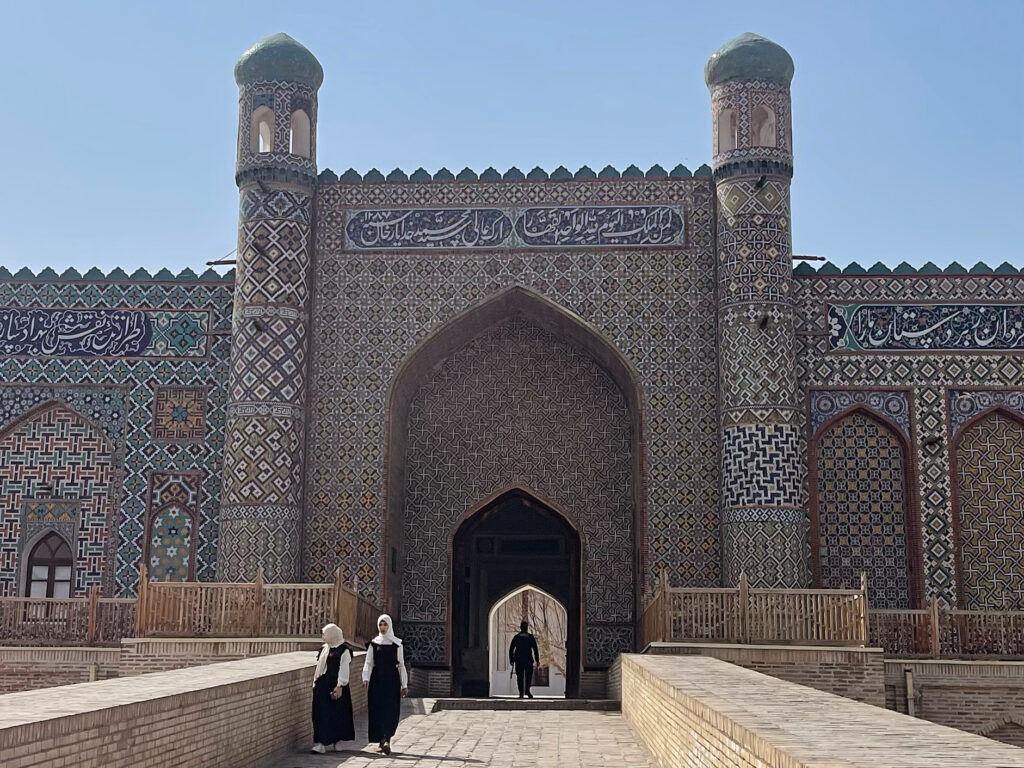
The palace originally included 119 rooms and 7 courtyards, with much of it designated as living quarters for the Khan’s harem. However, parts of the palace were destroyed, and now only 19 rooms remain. As you walk around the palace, you’ll see painted ceilings and carved wooden poles and doors, with local craftsmen at work.
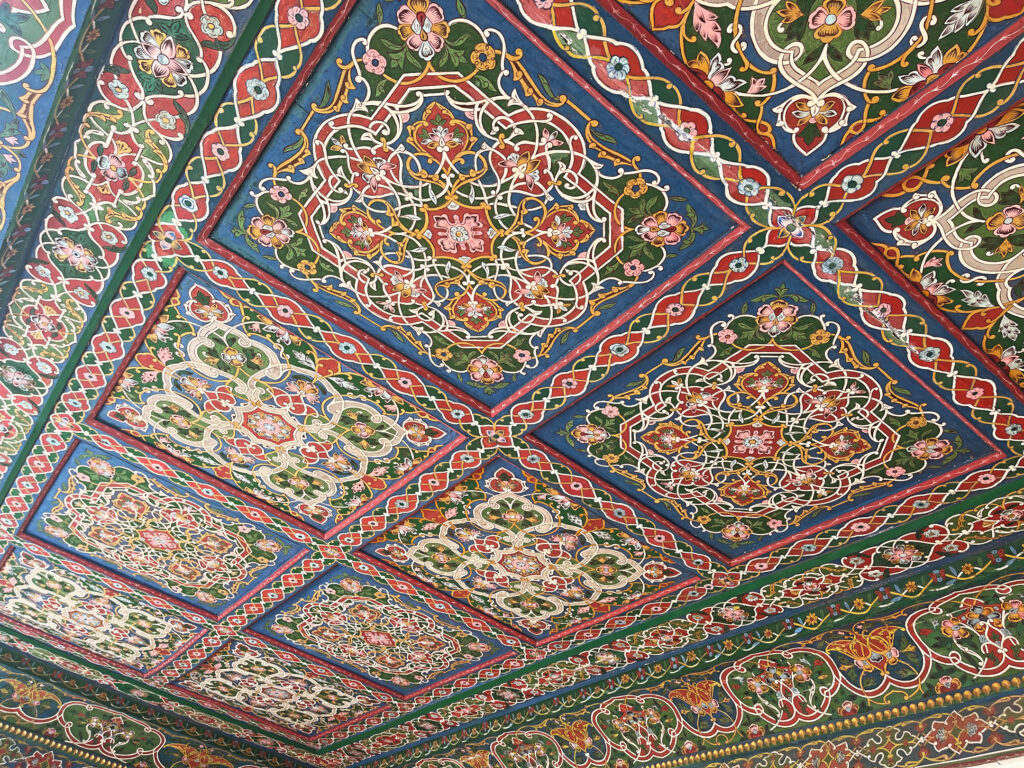
The most interesting rooms are the intricately decorated throne room and waiting room to your left upon entering the palace. Inside some of the other palace rooms, you’ll also discover some eccentric rooms, including unexpected European and Russian art and sculptures, as well as a room full of some rather tatty stuffed animals.
Jami Mosque
The Jami mosque was completed by Umar Khan, the seventh Khan of the Khanate, who ruled between 1809 and 1822. He elevated himself beyond the title of khan, bestowing upon himself the title of Amir al-Muslimin (commander of the faithful).
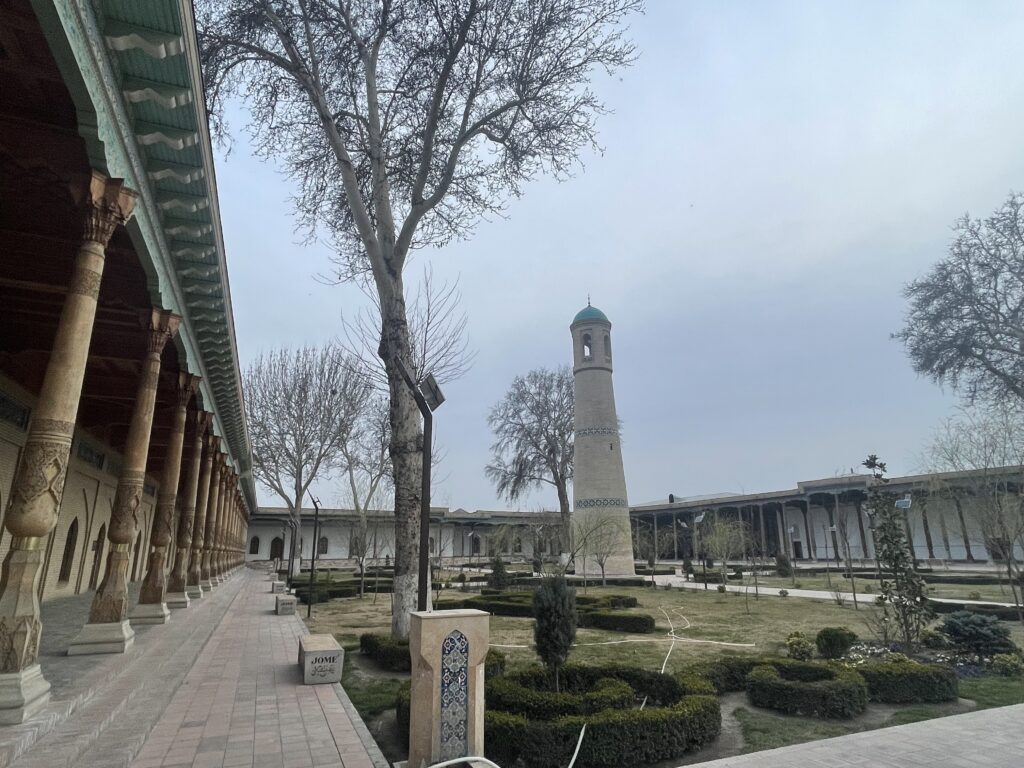
It is said that the mosque was built on the site of a previous mosque, which was destroyed by Genghis Khan in the 13th century as he swept through the region, razing towns and cities and butchering entire populations.
Nowadays, the mosque features a spacious grassy area, 98 wooden columns, and a towering 23-meter minaret, rumored to have served both as a call to prayer and an execution tower.
Norbutabiy Madrasah
The Norbutabiy Madrasah from the late 18th century is more typical of architecture from Bukhara. Situated near Chorsu Square, its rectangular shape boasts a spacious courtyard, flanked by towers on each corner.
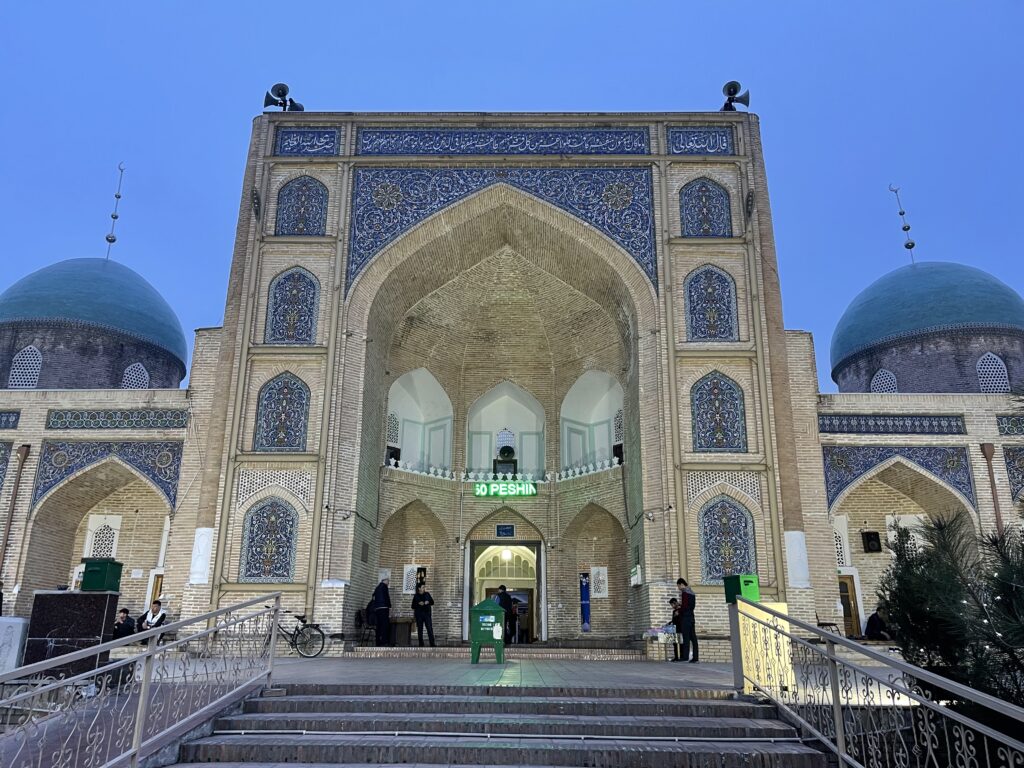
The madrasa operated throughout various periods, including the Soviet era, facilitating important religious events such as Friday and Eid prayers. Given the Soviet suppression of religion, this was unusual, as many religious buildings were compelled to close.
Damoi Shakhon and Modari Khan Mausoleums
Just a few minutes walk from the Norbutabiy Madrasah is a large graveyard which houses a number of monuments to commemorate Umar Khan and his family. The Damoi Shahkon Mausoleum (also known as Dakhma-i-Shokhon) is a small mausoleum in a corner of the graveyard, with colorful portal, partially hidden by a tree.
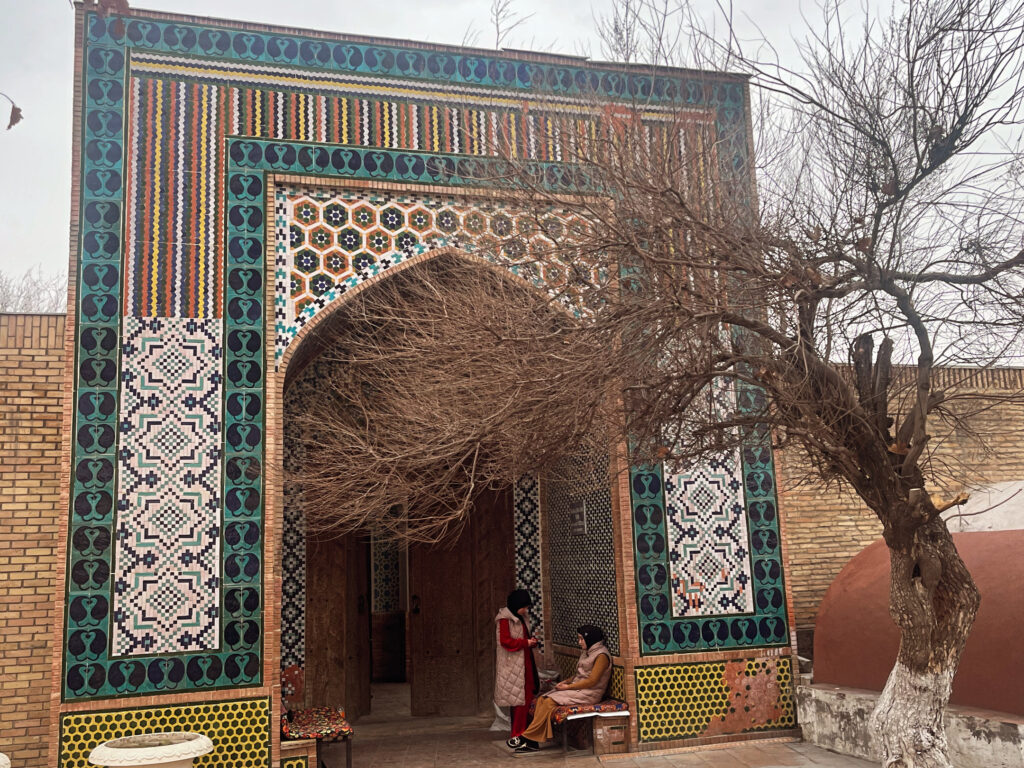
The Madari Khan Mausoleum, erected in 1825 for Umar Khan’s mother, also honors his wife, the poet Nodira. Tragically, Nodira was executed on the orders of Emir Nasrallah of Bukhara. Nearby stands a white stone table in her honor. The mausoleum is nestled amidst graves, making viewing somewhat challenging but feasible.
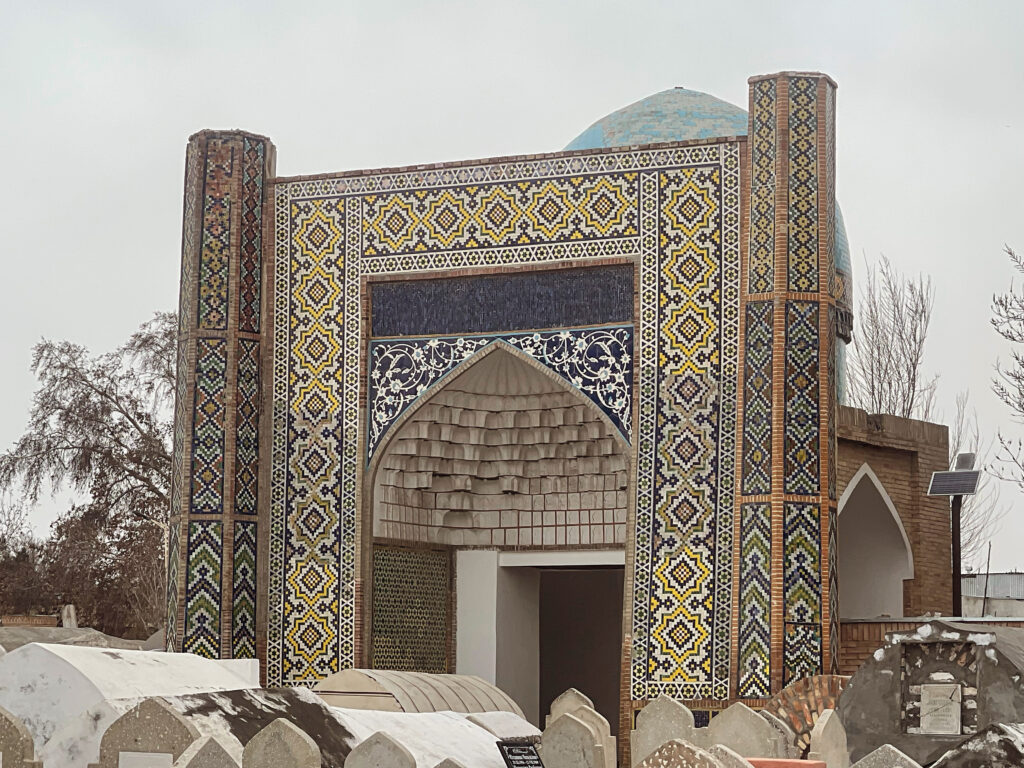
Very few tourists come here so expect to see only locals praying, quietly conversing or singing together. It’s certainly a serene spot to visit.
Other Places to Visit in Kokand
Other places to visit in Kokand include the Regional Studies Museum with exhibits on the history of Kokand, and the Mukimi Museum inside the Mian Hazrat Medressa, dedicated to local poet Mohammedamin Muqimi. The grassy park area around the Khudoyar Khan Palace is also a nice place to relax on a park bench and people-watch.
Where to Stay in Kokand
Accommodations in Kokand are somewhat limited, but I had the pleasure of staying at the luxurious Silk Road Kokand Hotel, undoubtedly the best hotel in town, although more expensive than the rest. The hotel large and spacious modern rooms and a restaurant, bar and garden. It’s one of the very few places in Kokand where you can relax with an alcoholic drink.
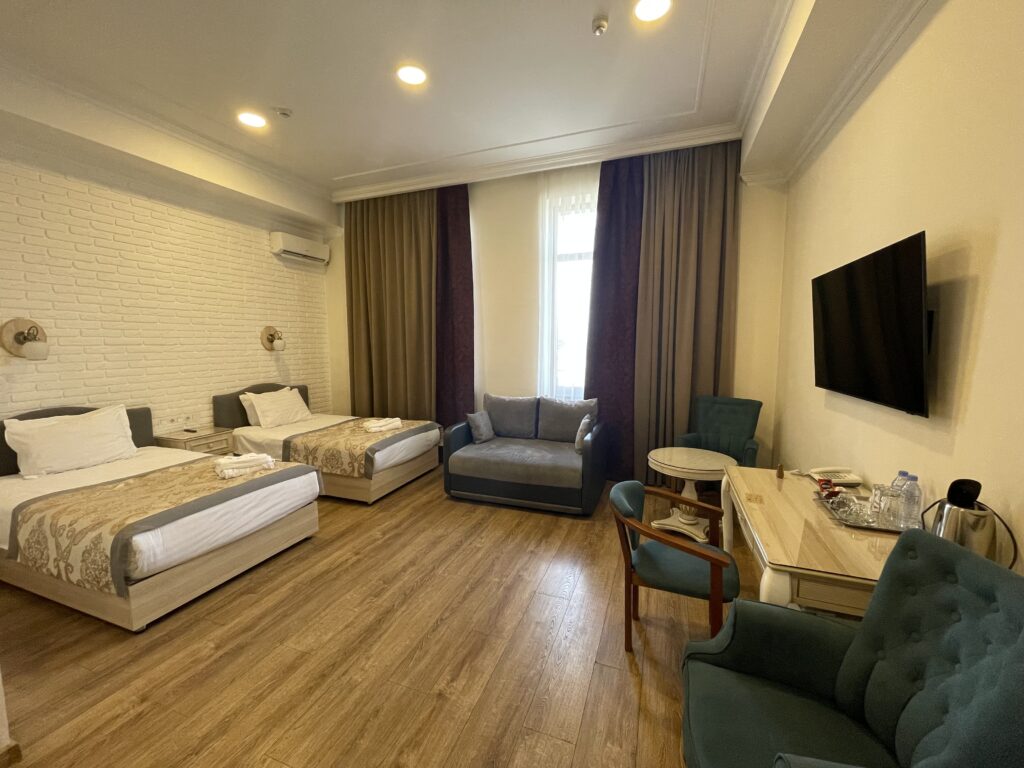
Rating: 9.5 | Breakfast? ✔ | Check Prices
Alternatively, the Reikartz Hotel and the Rohat Hotel offer more budget-friendly choices, both of which are centrally located.
How to Get to Kokand
From Tashkent: The best way is to travel by train which takes around 4 hours, 15 minutes to 5 hours, depending on the type of train. It’s a beautiful journey which passes through the mountains . There are at least 2 trains per day and you can book a ticket on the official website or the more user-friendly 12Go website.
There aren’t any buses between Tashkent and Kokand so to travel by car you need to go by shared taxi from Kuylyuk bazaar. The drive takes a similar time to the train but you’ll have to wait for the taxi to fill up before it leaves.
Alternatively, you can arrange a private taxi or book a transfer as part of a guided tour (see below).
From Samarkand: The sleeper train leaves once or twice a day from Samarkand. Book on the official website or 12Go website.
From within the Fergana Valley: You can travel around the Fergana Valley by train, shared taxi or marshrutka. A marshrutka, a minibus taxi, is the cheapest way but probably the least comfortable as they get packed out. Each city or town has a specific area to find marshrutkas and shared taxis.
Trains run daily between Kokand and Andijan but not Namangan. If traveling by train from Fergana city, you need to go from Margilan train station. Book on the official website or 12Go website.
Kokand Guided Tours
For a guided tour of Kokand, consider exploring the Fergana Valley as a whole, with stops at the Silk Factory in Margilan and the ceramics workshop in Rishton. You can do the whole tour including travel to and from Tashkent in one day or at a slower pace across two days including hotel.
One Day Tour
This trip starts with pickup from your hotel in Tashkent and transfer across the mountains for a guided tour through the main attractions of Kokand before moving on to learn about Rishton’s famous blue glazed ceramics at Rustam Usmanov’s workshop.
You then finish the day learning about silk production with the chance to buy silk scarves and dresses in Margilan before being transferred via private car back to your hotel in Tashkent.
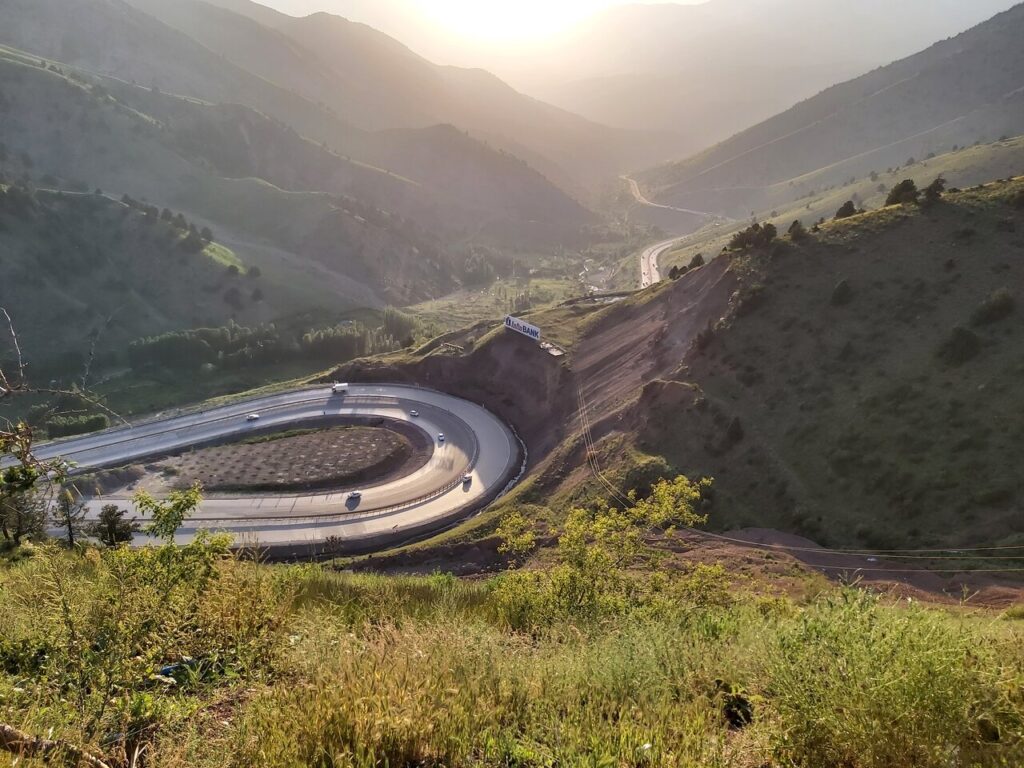
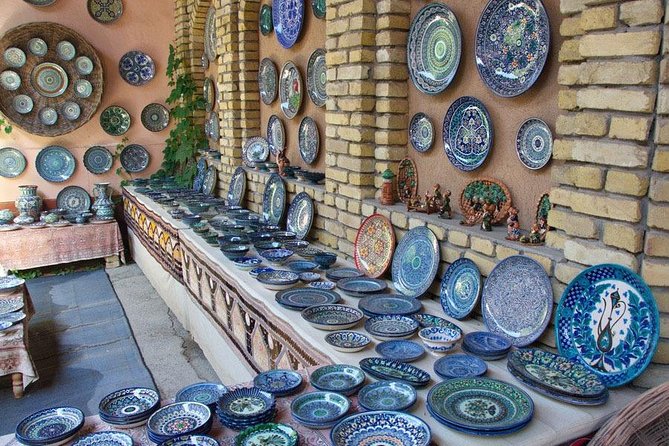
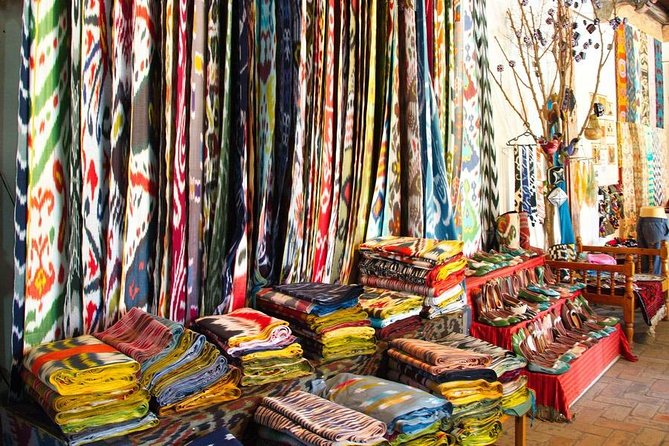
Ratings: 4.5 | Length: 10 to 14 hours | See Prices
“A great trip for exploring a part of Uzbekistan that is not so well known. Having visited Khiva, Bukhara, Samarkand and Tashkent I wanted a tour to visit the Ferghana Valley. This trip was excellent in meeting this need.” Read More Reviews…
Two Day Tour
Alternatively, for a similar tour at a slower pace, consider this 2 day trip. This tour also includes pickup and drop-off in Tashkent plus one night’s accommodation in a boutique hotel.
Additional stop offs here include the Damoi Shahkon and Madari Khan Mausoleum plus a visit to the bustling Kum Tepa bazaar in Margilan (open on Sundays & Thursdays).
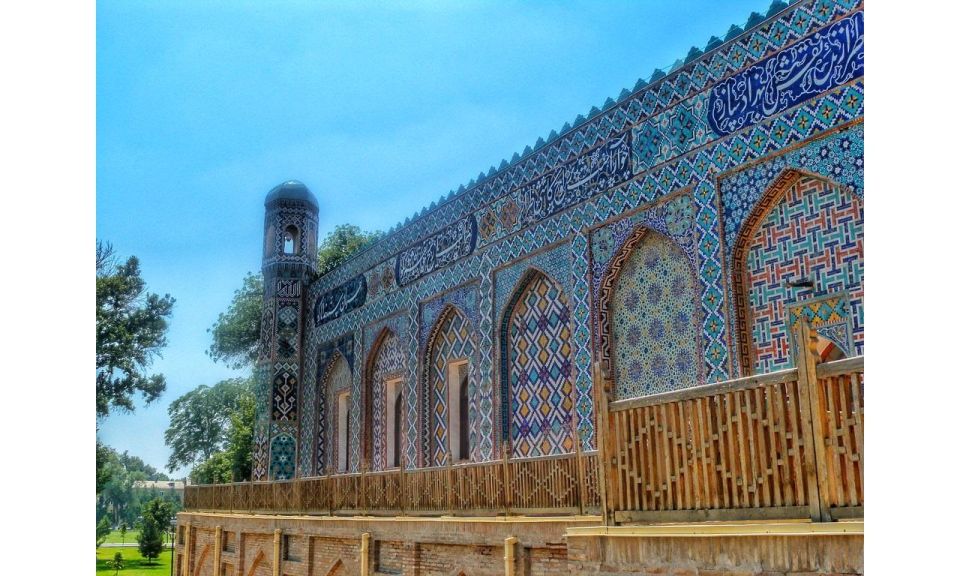
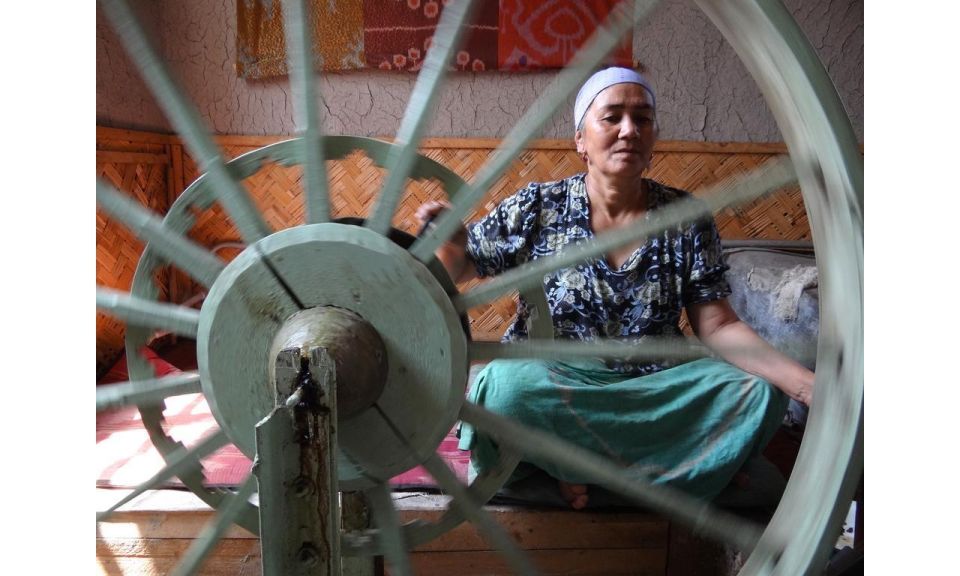
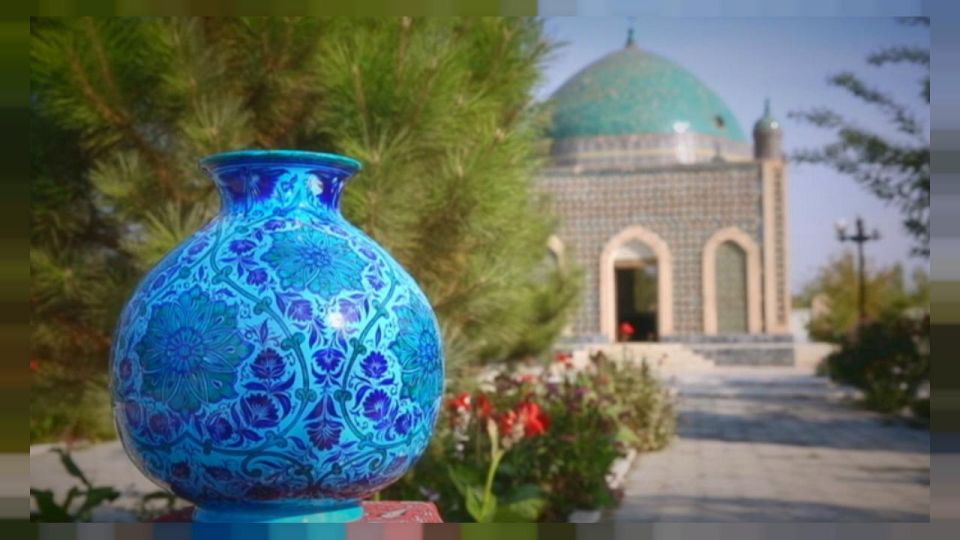
New | Length: 2 days | See Prices
Planning a trip to Central Asia? Read our Full Guide to Travel in Uzbekistan.